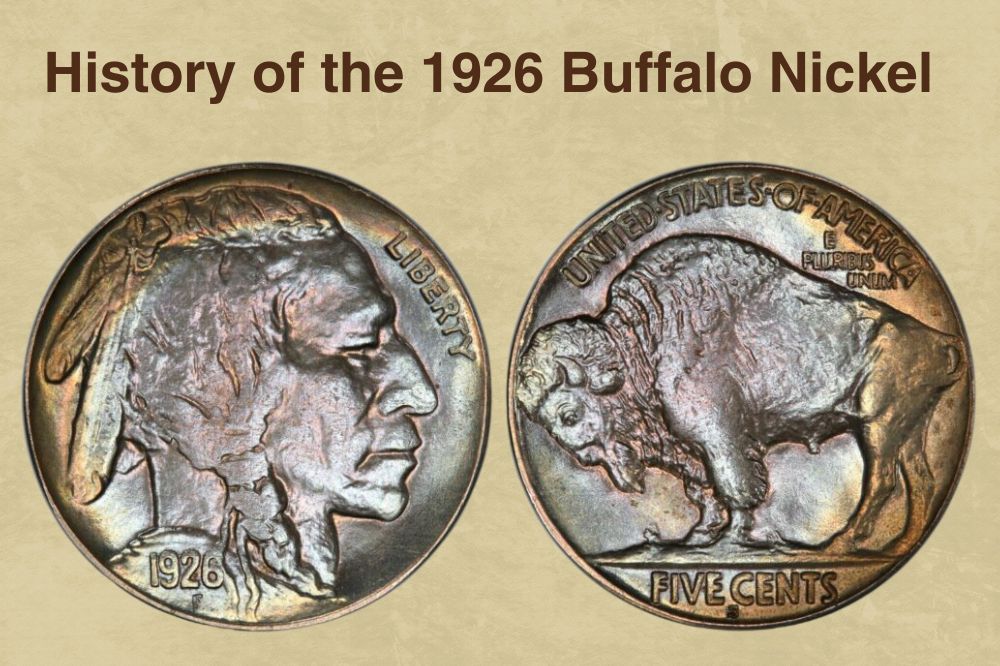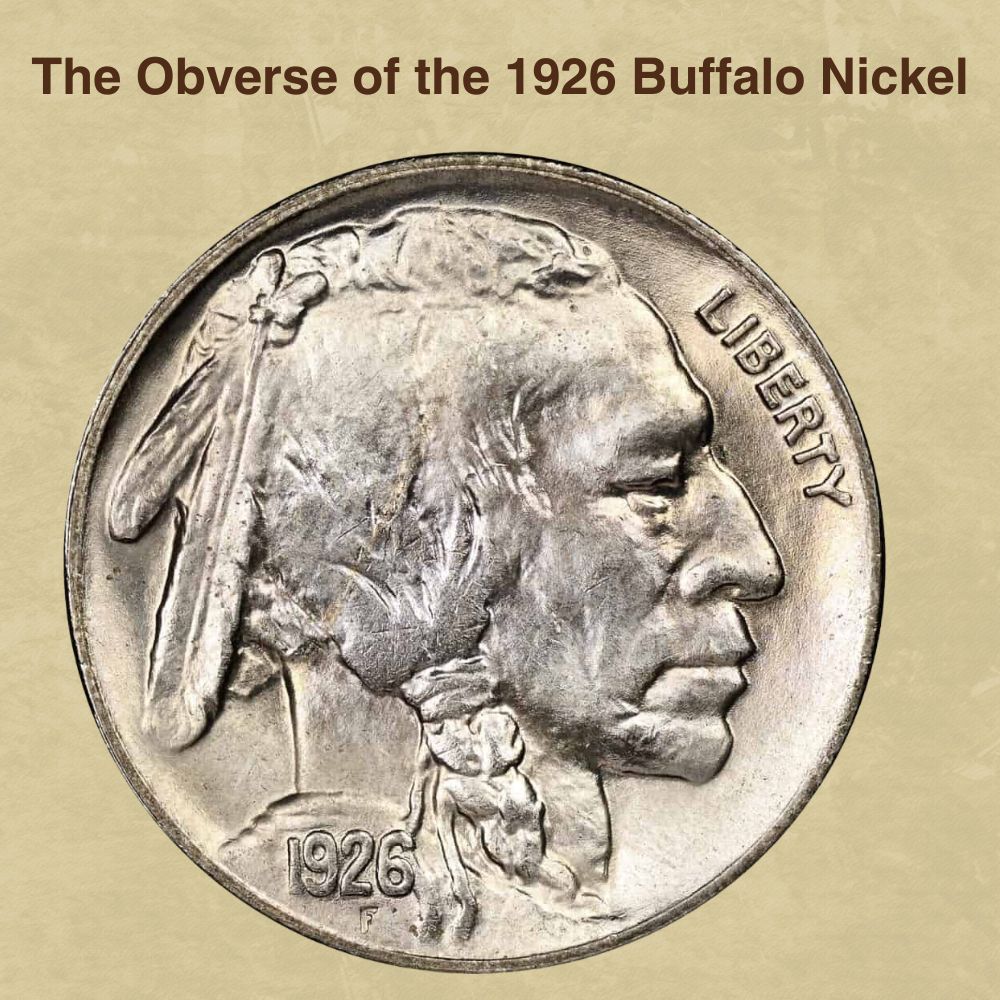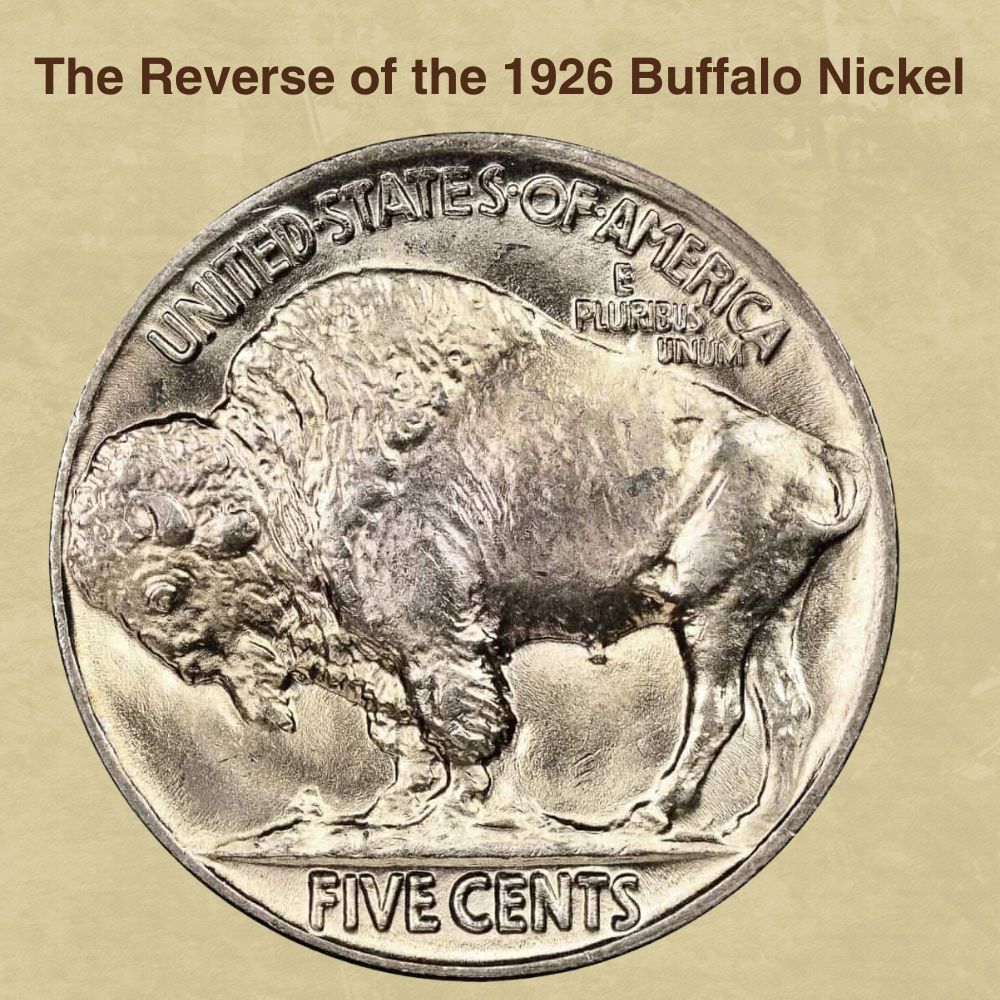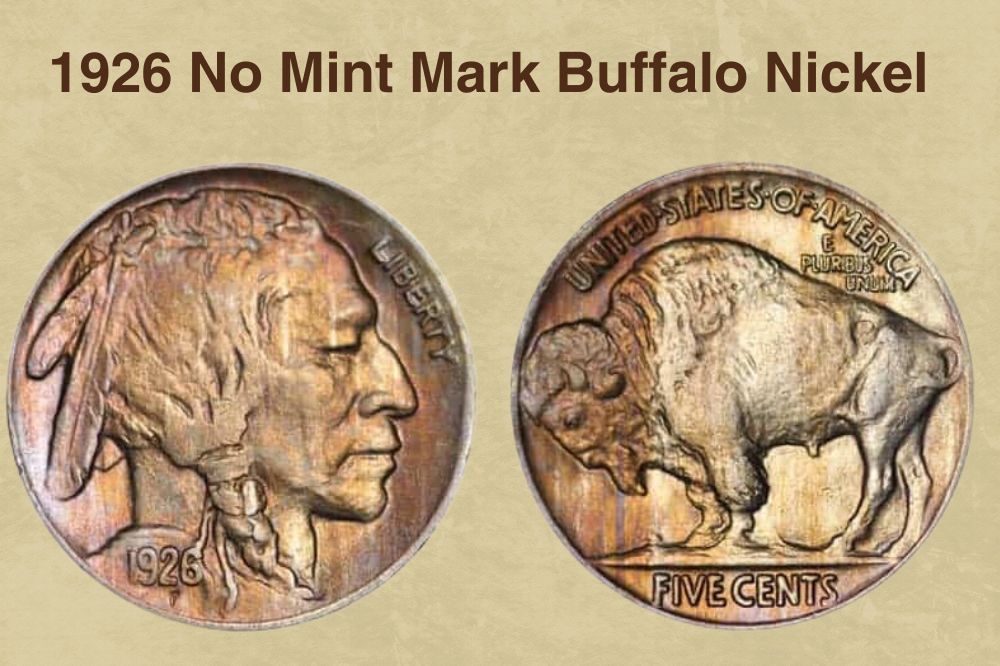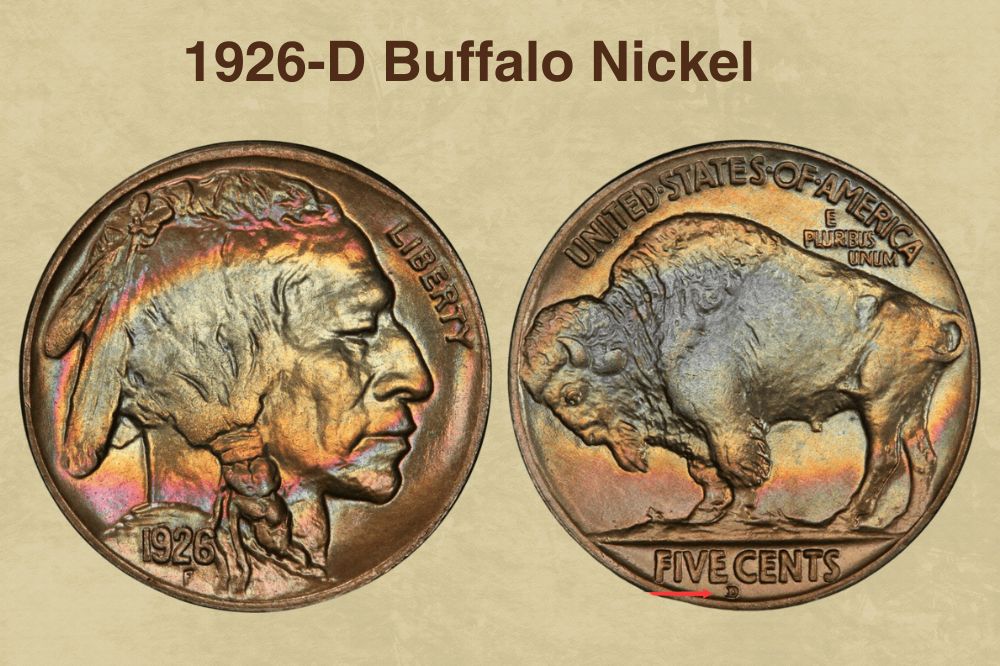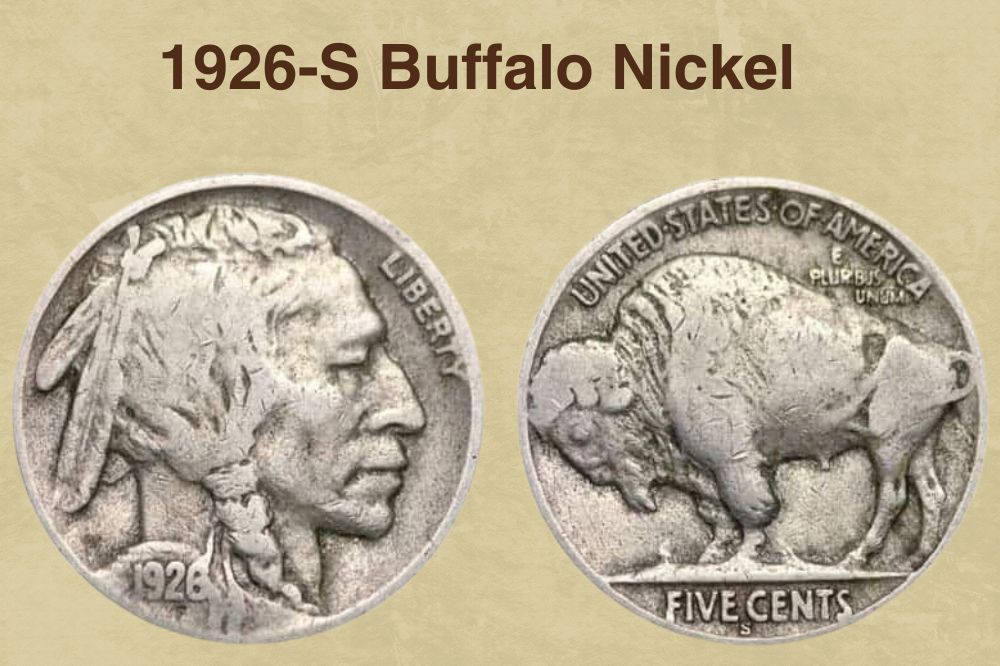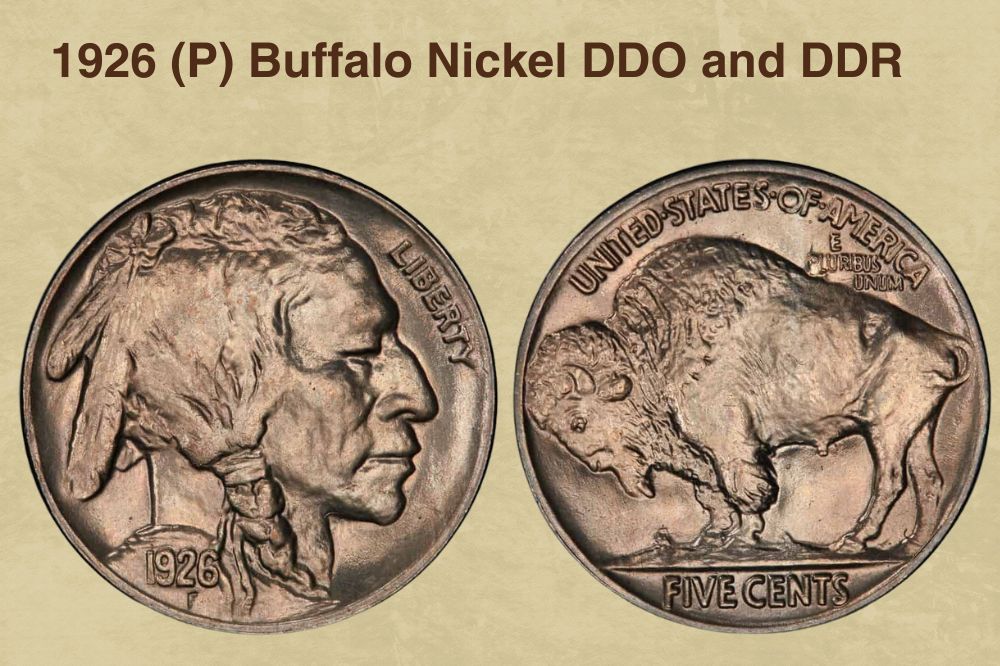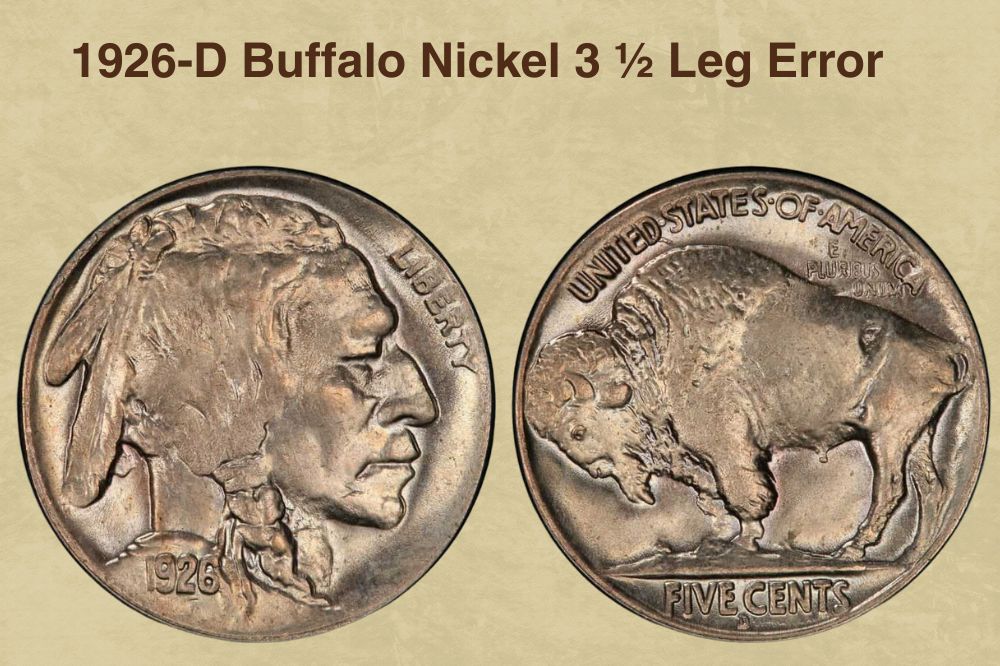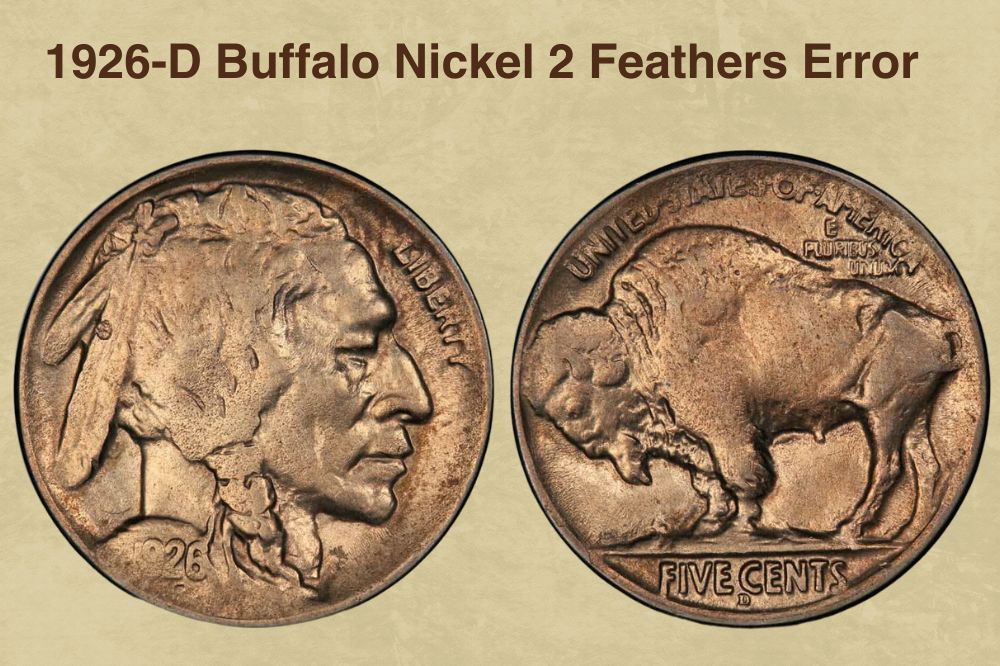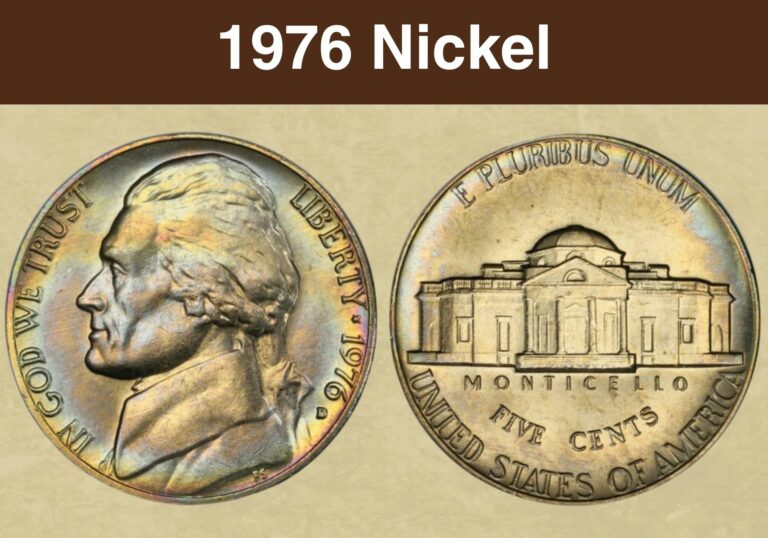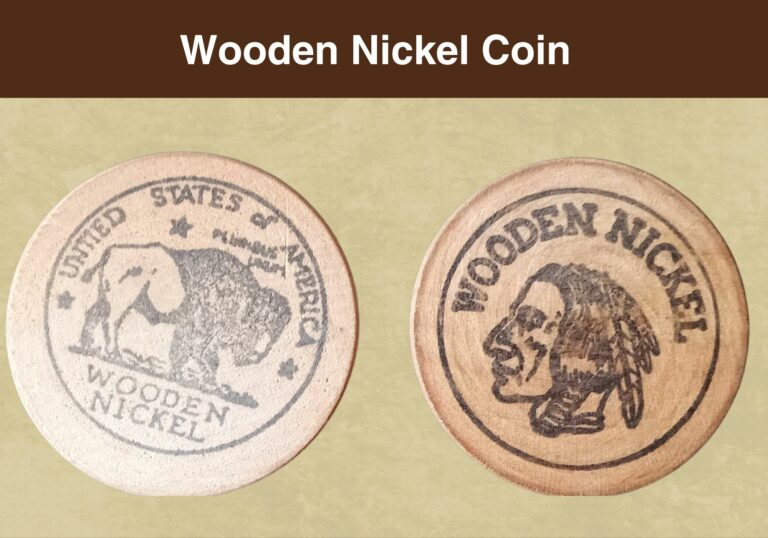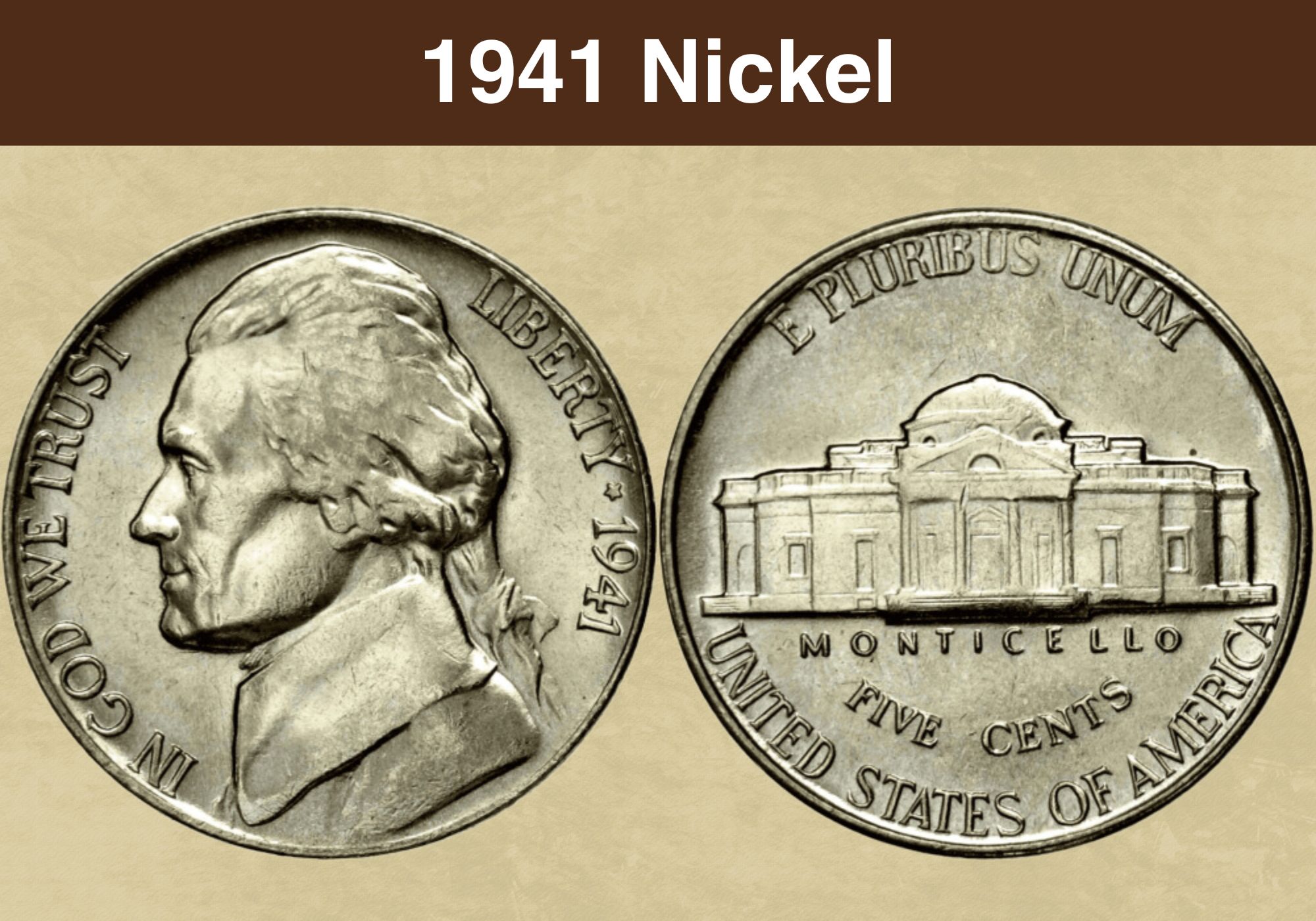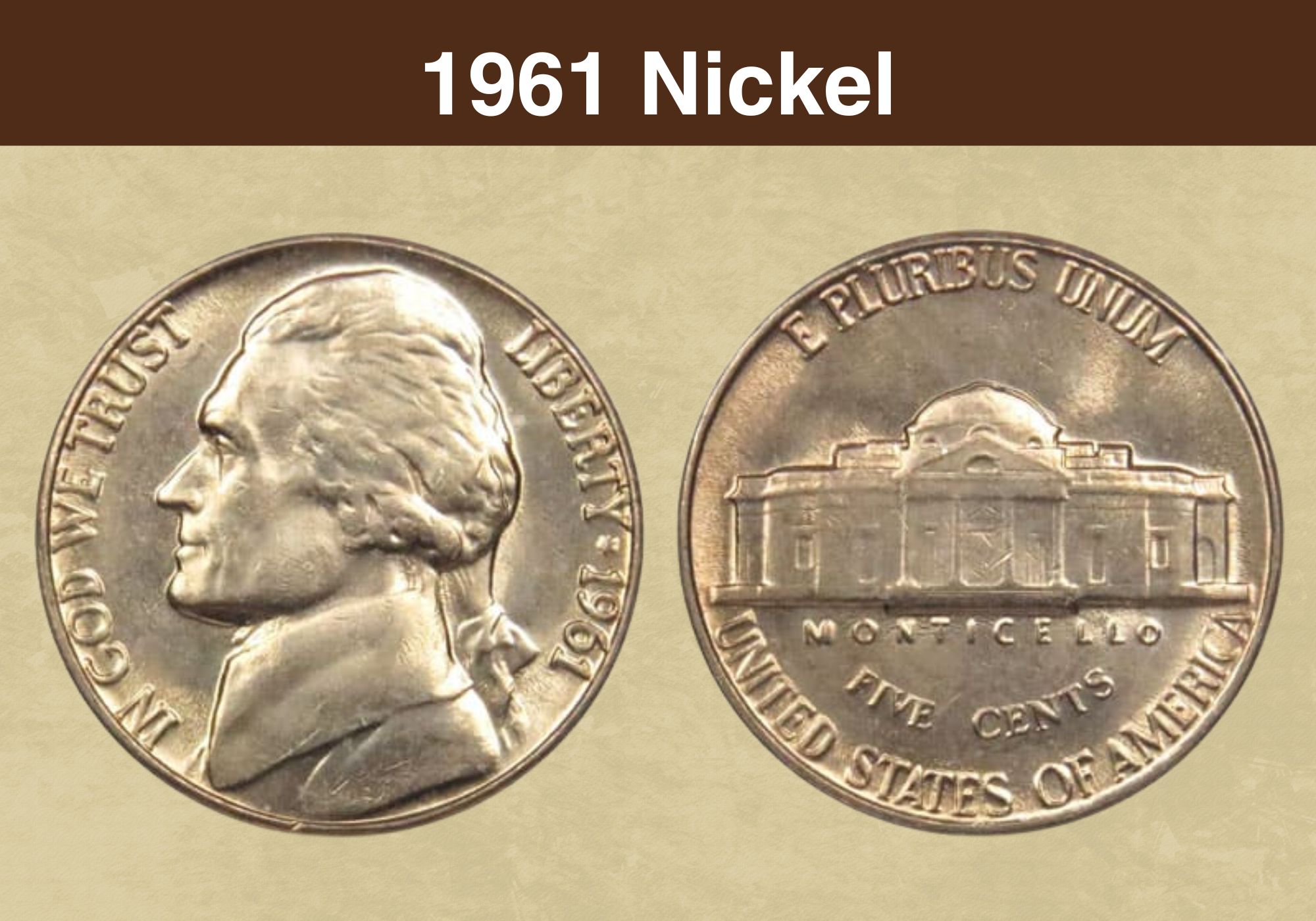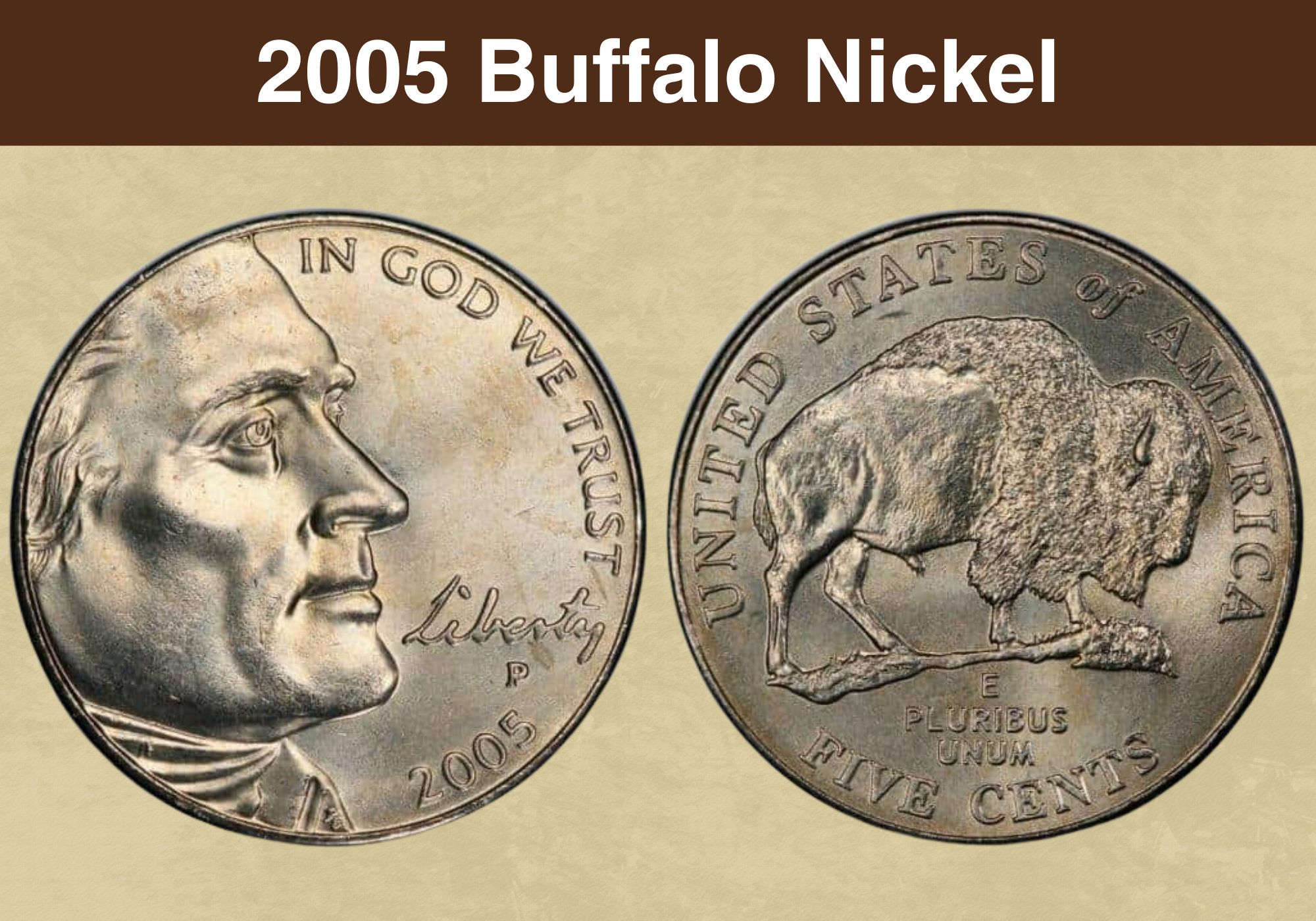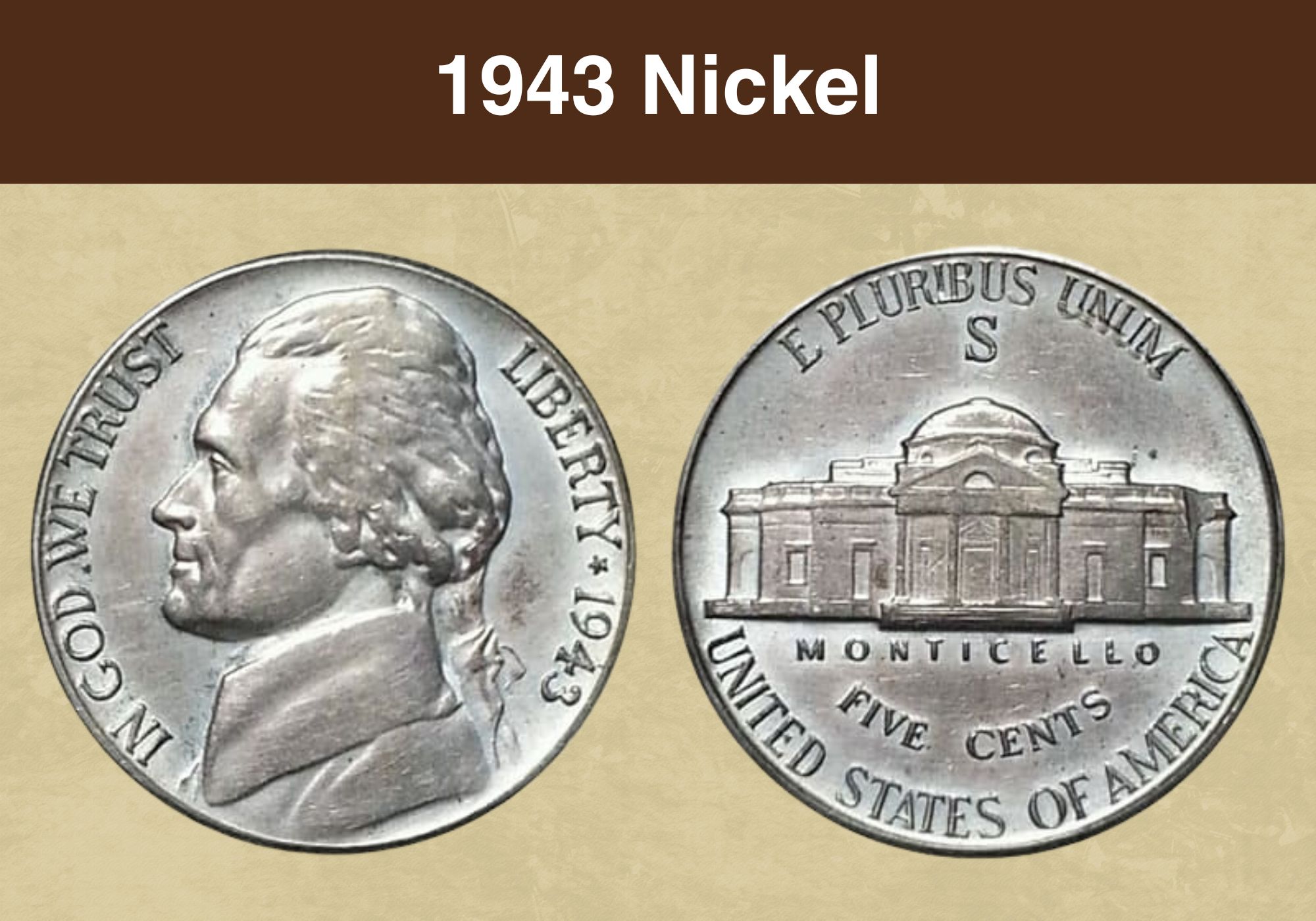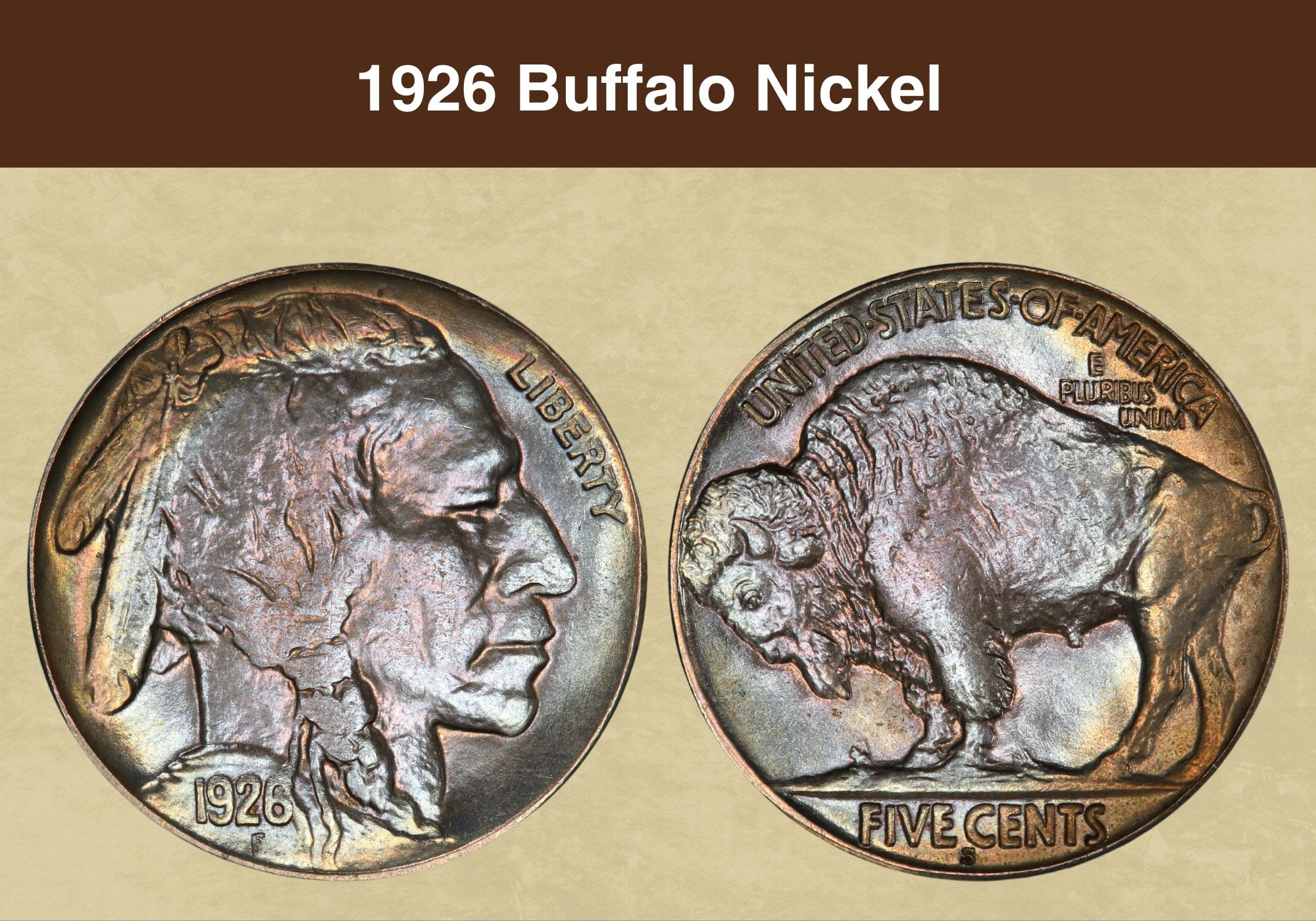
Coin Value Contents Table
- 1926 Buffalo Nickel Value Chart
- History of the 1926 Buffalo Nickel
- Features of the 1926 Buffalo Nickel
- 1926 Buffalo Nickel Grading Guides
- 1926 Buffalo Nickel Value Guides
- 1926 No Mint Mark Buffalo Nickel Value
- 1926-D Buffalo Nickel Value
- 1926-S Buffalo Nickel Value
- Rare 1926 Buffalo Nickel Errors List
- Where to Sell Your 1926 Buffalo Nickel ?
- 1926 Buffalo Nickel FAQ
The Buffalo Nickel is considered one of the prettiest pieces of US currency. The concept was even reproduced on the $50 Gold Bullion coin from 2006 to date. But we’re interested in the original 5c piece. Specifically, we’re exploring the 1926 Buffalo Nickel Value and its history. Let’s learn the pertinent facts about this coin and how they affect its investment potential.
1926 Buffalo Nickel Value Chart |
||||||
| Coin | XF 40 | AU 50 | MS 60 | MS 65+ | MS 67 | MS 68 |
| 1926 No Mint Mark Buffalo Nickel | $18 | $25 | $60 | $500 | $3,150 | $50,000 |
| 1926-D Buffalo Nickel | $180 | $375 | $550 | $7,250 | $80,000 | – |
| 1926-S Buffalo Nickel | $1,125 | $2,500 | $5,500 | $250,000 | – | – |
History of the 1926 Buffalo Nickel
The Buffalo Nickel is an interesting coin because in a weird way, both its nicknames are misplaced. Some people call it the Indian Head Nickel, but that’s no longer suitable. In the modern world, it might be called the Native American Head Nickel. But its other name, the Buffalo Nickel, isn’t correct either since the back of the coin features a bison, not a buffalo.
They’re similar animals and are both related to cows. But buffaloes live in Africa and Asia while bison are indigenous to America. They look slightly different too, with a larger, fluffier head, hunched shoulders, and smaller horns. The Buffalo Nickel was minted from 1913 to 1938. It was designed by James Earle Fraser, a studio assistant to Augustus Saint-Gaudens.
Early US coins were crafted by in-house mint engravers. Many traced their roots to England where they had trained as medal makers. This meant the coins they produced were simple, practical, and affordable. They weren’t as fancy and aesthetic as sculptural pieces. But the powers that be demanded a coin-refresh that could compete with gorgeous foreign currency.
Making US Coins Beautiful
This 5c revamp was part of the coin beautification project that started in 1904 with the 26th US President, Theodore Roosevelt. He hired Saint-Gaudens – who was a popular sculptor and a close friend of the president – to redesign American coinage. But Saint-Gaudens died before he finished. Some of his students and assistants succeeded him, including Fraser’s Nickel.
Others were Victor David Brenner with the Lincoln Penny and Adolph Weinman, who made the Mercury Dime and the Walking Liberty Half Dollar. By extension, Laura Gardin Fraser was to do the Washington Quarter. She was James Earle Fraser’s former student and current wife, but despite winning a coin design contest, John Flanagan’s design was selected instead.
But let’s get back to the nickel. When he first unveiled his buffalo design, the public loved it. But some numismatist influencers were unimpressed. Numismatics is the study, trade, and collection of coins, medals, tokens, etc. These experts – and many mint officials – noted the high relief on the Buffalo Nickel would make it wear out too soon. And sadly, they were right.
Important Dates for the Buffalo Nickel
Because the coin was so delicately sculpted, the date, cheekbone, bison tail, and bison horn soon faded in circulation. The coins also needed to be struck additional times to fully copy the design, so dies expired faster and had to be replaced more often. Fraser and the mint adjusted the coin design by flattening the hill at the back, but this just made things worse!
1926 is a semi-key date for Buffalo Nickels because so many Denver and San Francisco coins had these problems. The famous 3 ½ legs coin error and the 2-feathers error both occurred this year and can sometimes sell for thousands of dollars. But that wasn’t the only year with this error. It showed up again on coins from 1927 and 1936 with something similar in 1937.
On 1937 Buffalo Nickels, the entire front leg was missing, so it’s referred to as the 3-legged bison. This mint mistake occurred on the die itself rather than the coin, so it was repeated en masse and became a variety with multiple flawed pieces. We’ll discuss them in detail in the Coin Errors section later in this article. For now, let’s start with the features of this nickel.
Also read: Top 10 Most Valuable Nickels Worth Money
Features of the 1926 Buffalo Nickel
In numismatics, the tails side of a coin is called its reverse, the heads side is its obverse, and the thin side is its edge. This sometimes has ridges called reeds. The raised border is the rim or collar and the blank discs that are struck to produce coins are called planchets. The words on a coin are mottos or legends while the images are devices and the background is the field.
The Obverse of the 1926 Buffalo Nickel
It shows a Native American Chief with feathers in his hair. The coin is very tightly crafted so the device almost touches the rims. The upper right of the coin – in front of the chief’s forehead and nose – has the legend Liberty. The lower left has the mint date though it’s worn off most coins. Under the date, there’s an F to identify the coin designer, James Earle Fraser.
The Reverse of the 1926 Buffalo Nickel
It shows an American bison and is just as tightly cropped as the front of the nickel. Type 1 coins have the bison standing on a hill while Type 2s have it on flatter ground. The top of the coin reads United States of America, with E Pluribus Unum over the animal’s lower back. The bottom has the denomination, Five Cents, with the mint mark between Five and Cents.
Other Features of the 1926 Buffalo Nickel
Nickels have a plain or smooth edge, meaning they have no reeds. The coins are 21.21mm in diameter, 1.95mm thick, and weigh 5g. They’re made of 75% copper and 25% nickel, which is now used on the outer cupronickel-clad layer of most US coins. For reference, the earliest 5c coins were called half dismes. (The silent ‘s’ was later removed.) These were made of silver.
Also read: Top 17 Most Valuable Buffalo Nickel Worth Money
1926 Buffalo Nickel Grading Guides
Buffalo Nickels can be tough to grade because they deteriorate so quickly. And since the mint didn’t make collectibles and the coin was so popular with the public, it’s hard to find them in high grades. They use the Sheldon Scale from Poor (PO 1) to Mint State (MS 70). Some coins from 50 to 58 are labeled Uncirculated. But most people call them About Uncirculated (AU).
| # | Grade |
|---|---|
| 1 | Basal State-1 |
| 2 | Fair |
| 3 | Very Fair |
| 4, 5, 6 | Good |
| 7, 8, 10 | Very Good |
| 12, 15 | Fine |
| 20, 30 | Very Fine |
| 40 | Extremely Fine |
| 50 | About Uncirculated |
| 60 | Mint State |
| 65 | Mint State |
| 70 | Mint State |
Please check our grading guides to know your coin scale, It’s the necessary step to know the exact value of your coin.
Check out now: How to Grade Buffalo Nickel?
1926 Buffalo Nickel Value Guides
In 1926, Buffalo Nickels were minted in Philadelphia, Denver, and San Francisco. Notably, the Buffalo Nickel didn’t produce proof coins throughout its lifetime, so these are all regular or business strike coins intended for circulation. Nickels only had proofs in 1877 and 1878 when none were coined for circulation. From 1971 Jefferson Nickels had various proof styles.
1926 No Mint Mark Buffalo Nickel Value
In 1926, the Philadelphia Mint made 44,693,000 Buffalo Nickels without mint marks. On 27th September 2018, an MS 67+ sold for $16,450. In March 2020, another coin in the same grade sold for $10,575 while an April 2021 sale netted $9,120. By July it was down to $7,800. Since then, PCGS has received 14 Buffalo Nickels in MS 67+ so they’re now worth $10,000.
That said, two higher coins have shown up in MS 68. They haven’t been sold yet, but PCGS estimates their September 2023 value as $50,000 each. To further show the impact of coin volumes on pricing, consider the MS 67 and MS 66+. Over 70 coins have shown up in both grades, so despite only being half a step down, they’re worth $3,150 and $875 respectively.
1926-D Buffalo Nickel Value
The Denver Mint made 5,638,000 Buffalo Nickels in 1926, all with the D Mint Mark. The highest known grade for this coin is MS 67, and a sample sold for $70,500 on 8th October 2020. To date, only three coins have popped up in this grade so PCGS estimates their price as $80,000 in September 2023. Meanwhile, the 8 known MS 66+ are estimated at $22,500.
Half a step down, nearly 25 coins have been submitted to PCGS in MS 66 so the valuation for those is $9,250 in September 2023. But the difference between MS 65 and MS 65+ is a lot more drastic. We know of almost a hundred MS 65 coins, so their appraisal price is $5,000. But nearly ten coins exist in MS 65+, so those are evaluated at $7,250 in September 2023.
1926-S Buffalo Nickel Value
This is considered a semi-key date due to its low mintage. They only made 970,000 Buffalo Nickels at the San Francisco Mint in 1926. They all had the S Mint Mark and none of them were proof coins. On 1st April 2008, an MS 66 sold for $322,000. PCGS hasn’t graded any coins at this level. So far, the three samples we know of were all graded and sold by NGC.
But PCGS has graded four coins as MS 65+ and estimates their September 2023 value at $250,000. Their last recorded sale was in September 2019 where an MS 65+ was $246,750. One year earlier, NGC sold a Buffalo Nickel in the same grade for $64,625. Dropping half a step to MS 65, PCGS has received 14 of them and estimated their price as $125,000 in 2023.
Also read: Top 17 Most Valuable Jefferson Nickels Worth Money
Rare 1926 Buffalo Nickel Errors List
As we mentioned above, the 3 ½ leg Buffalo Nickel shows up in 1926, 1927, and 1936. And there’s also a 3-legged Buffalo Nickel from 1937. These mint errors sometimes sell for up to six figures. But for now, let’s look at some 1926 mint mistakes that can elevate the value of ordinary Buffalo Nickels. Examples include hub doubling, misalignment, and planchet clips.
1926 (P) Buffalo Nickel DDO and DDR
Doubled-die obverse and doubled-die reverse errors are both referred to as hub doubling since they happen as the hub is striking the die. If the second strike hits a slightly different spot, the mistake is copied to every coin made with that die. For the error to happen on both obverse and reverse dies is rare. An MS 65 sold for $3,120 in 2018. Three MS 66s are known.
1926-D Buffalo Nickel 3 ½ Leg Error
This mint mistake happened when a mint worker tried to extend the life of an old die. S/he polished it to remove a flaw but ended up rubbing off the lower half of its front leg. That meant all the nickels struck with that die were missing half a leg! An MS 66 sold for $9,400 in 2015. In September 2003, an AG 3 is worth $85. The only known MS 66 goes for $9,250.
1926-D Buffalo Nickel 2 Feathers Error
The 2-Feathers Error is a little harder to spot unless you’re consciously looking for it. If you check the Native American chief’s hair, he has two feathers on top with a third one tucked underneath. But you can only see the bottom part of the third feather. So on dies that were over-polished, the third feather disappeared. Uncirculated, one was $545 on eBay in 2021.
Also read: 14 Most Valuable Nickel Errors Worth Money
Where to Sell Your 1926 Buffalo Nickel ?
Now that you know the value of your coins, do you know where to sell those coins online easily? Don’t worry, I’ve compiled a list of these sites, including their introduction, pros, and cons.
Check out now: Best Places To Sell Coins Online (Pros & Cons)
1926 Buffalo Nickel FAQ
What Makes the 1926 Buffalo Nickel Rare?
This year had a relatively low mintage. San Francisco coins had the lowest volume with less than a million minted. But the rarest coin has a combined DDO and DDR Error, meaning it has hub doubling on both sides of the coin. An MS 65 with these two errors sold for $3,120 in November 2018. Meanwhile, looking back at the 1926-S Buffalo Nickel that we started with, an MS 66 sold for $322,000 in 2008 and an MS 65+ is worth $250,000 in September 2023.
Is a 1926 Buffalo Nickel Made of Silver?
No. All Buffalo Nickels are 75% Copper and 25% Nickel. Looking at the history, nickels got their nickname because of their high nickel content, which was introduced in 1866. Before that, they were called half dimes or half dismes (with a silent ‘s’) and were made of silver.

